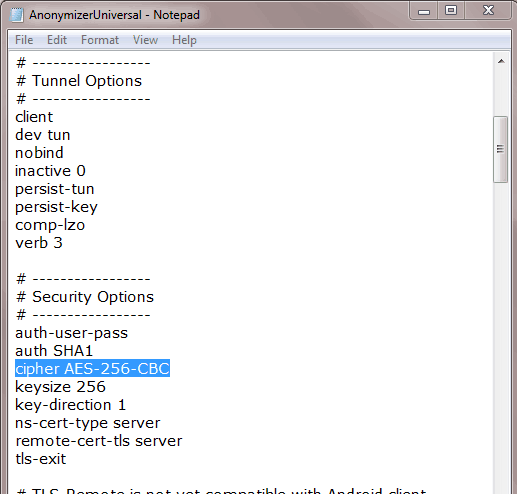

I've not experienced any interference with any of my daily surfing or with banking or commerce sites. I dont' know what Firefox's Strict Enhanced Tracking Protection might to with it.)

Anonymizer universal vpn pro#
I've been running v6.2.7 in Firefox 91.0.2 in Win10 Pro 21H1 for about three weeks and other than a hit or two daily to Google (less than 1KB data exchanged) and the limited VPN server access as detailed on their website, this extension is one's best shot at "better than nothing." (I use Ghostery to anonymize personal data points, Google User Content included. While I get the occasional call for help on their systems or LAN/WAN, it's never about their browser. I run it every now and then for a week or two to make sure it continues to meet my expectations in that I've recommended it to several people who:ġ) Can't afford any VPN having to scrape their budget just for an ISP.Ģ) Don't do just about anything on their PC's outside of the browser.
Anonymizer universal vpn install#
This does NOT require the install of CyberGhost's VPN.
Anonymizer universal vpn full#
If the IP truncation method is used, then at no time is the full IP address written to disk as all truncation happens in memory nearly instantaneously after the request has been received.This thread reads like one on a culinary forum where a member posts up, "How can I spice up a T-bone steak?" And where the spice shelf at the grocery store has about 500 of those little bottles.Ĭonsidering the visibility of this discussion, I wanted to post up a mention of CyberGhost's free STAND ALONE browser extension. (If the IP address is an IPv6 address, the last 80 of the 128 bits are set to zero.) Only after this truncation process is the request written to disk for processing. If the &aip=1 parameter is found in the request URL, then the last octet of the user IP address is set to zero while still in memory. the IP address of the requester).Īs soon as a request arrives, it is held in memory for truncation.

the type of browser being used) and the TCP/IP header (i.e. When a request for gtag.js arrives, it includes additional information in the HTTP request header (i.e. The Analytics Collection Network is the set of servers that provide two main services: the serving of gtag.js (the Analytics JavaScript) and the collection of data sent via requests for /collect. The IP masking parameter looks like this: If the masking function has been called prior to the page tracking function, an additional parameter is added to the pixel request. When the Analytics JavaScript runs a function from the function queue that triggers data to be sent to Google Analytics (this function is typically gtag('config', '' in the gtag.js library), it sends the data as URL parameters attached to an HTTP request for. These functions, which are set by the site owner when implementing Analytics, can include functions like specifying the Analytics account number and actually sending page view data to Google Analytics for processing. The function queue is a JavaScript array where the different Analytics configuration and collection functions are pushed. When a JavaScript-enabled web browser loads a page with the Analytics tag, it does two things asynchronously: It loads and processes the Analytics function queue, and it requests the Analytics JavaScript. The process of IP masking in Analytics takes place within two steps in the collection pipeline: the JavaScript Tag and the Collection Network. The IP truncation/masking takes place as soon as data is received by Google Analytics, before any storage or processing takes place. This feature is designed to help site owners comply with their own privacy policies or, in some countries, recommendations from local data protection authorities, which may prevent the storage of full IP address information.

In depthĪnalytics provides the anonymize_ip feature ( gtag('config', '', ) in the gtag.js library) to allow website owners to request that all of their users' IP addresses are masked within the product. In Universal Analytics, IP-address masking is opt in, and is implemented as described in the "In depth" section below. Geographic dimensions are later derived from truncated IP addresses. The full IP address is never written to disk in this case. The IP-masking feature in Universal Analytics sets the last octet of IPv4 user IP addresses and the last 80 bits of IPv6 addresses to zeros in memory shortly after being sent to Google Analytics. When a customer of Universal Analytics requests IP-address masking, Analytics truncates the address as soon as technically feasible. In Google Analytics 4, IP masking is not necessary since IP addresses are not logged or stored.


 0 kommentar(er)
0 kommentar(er)
